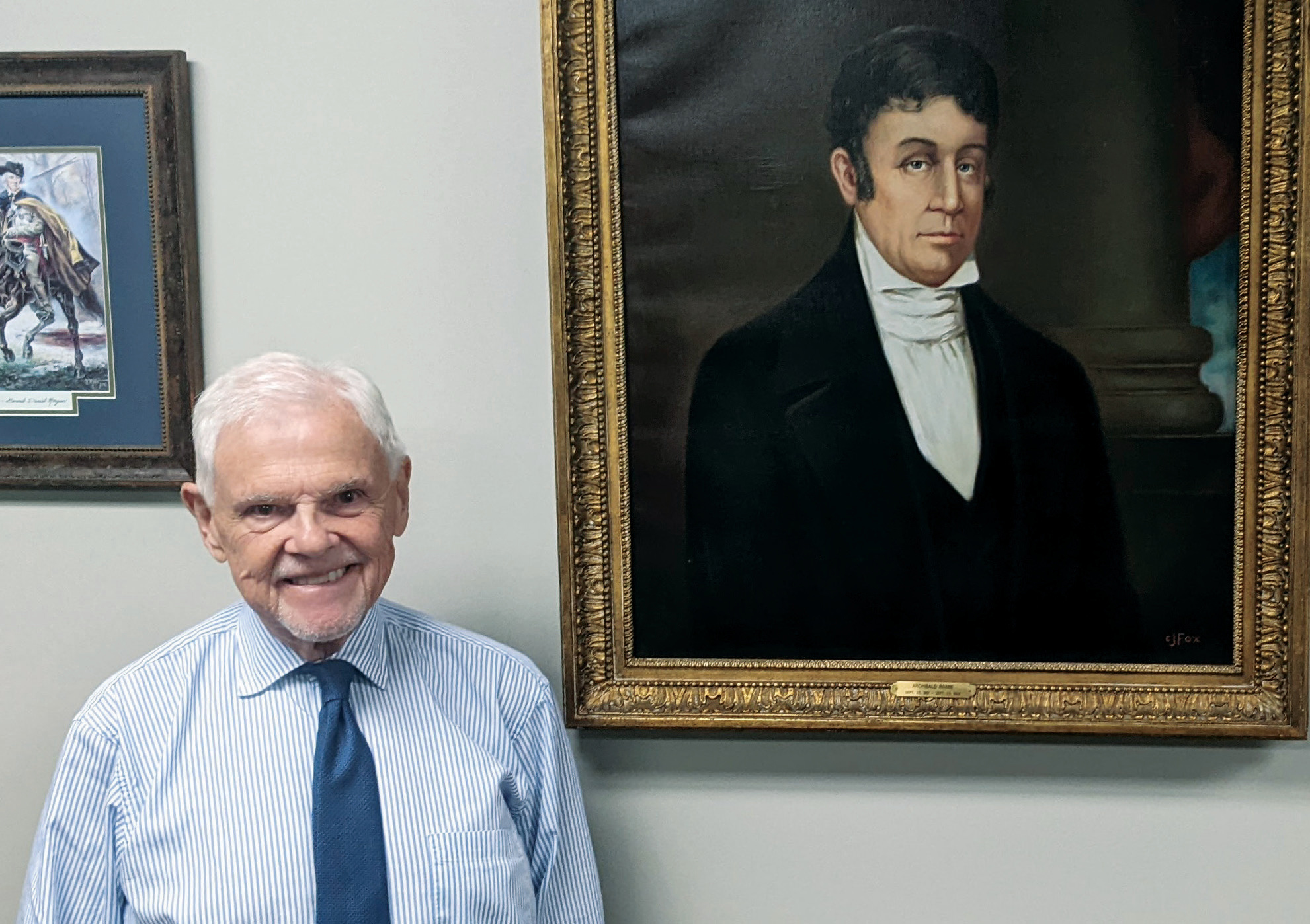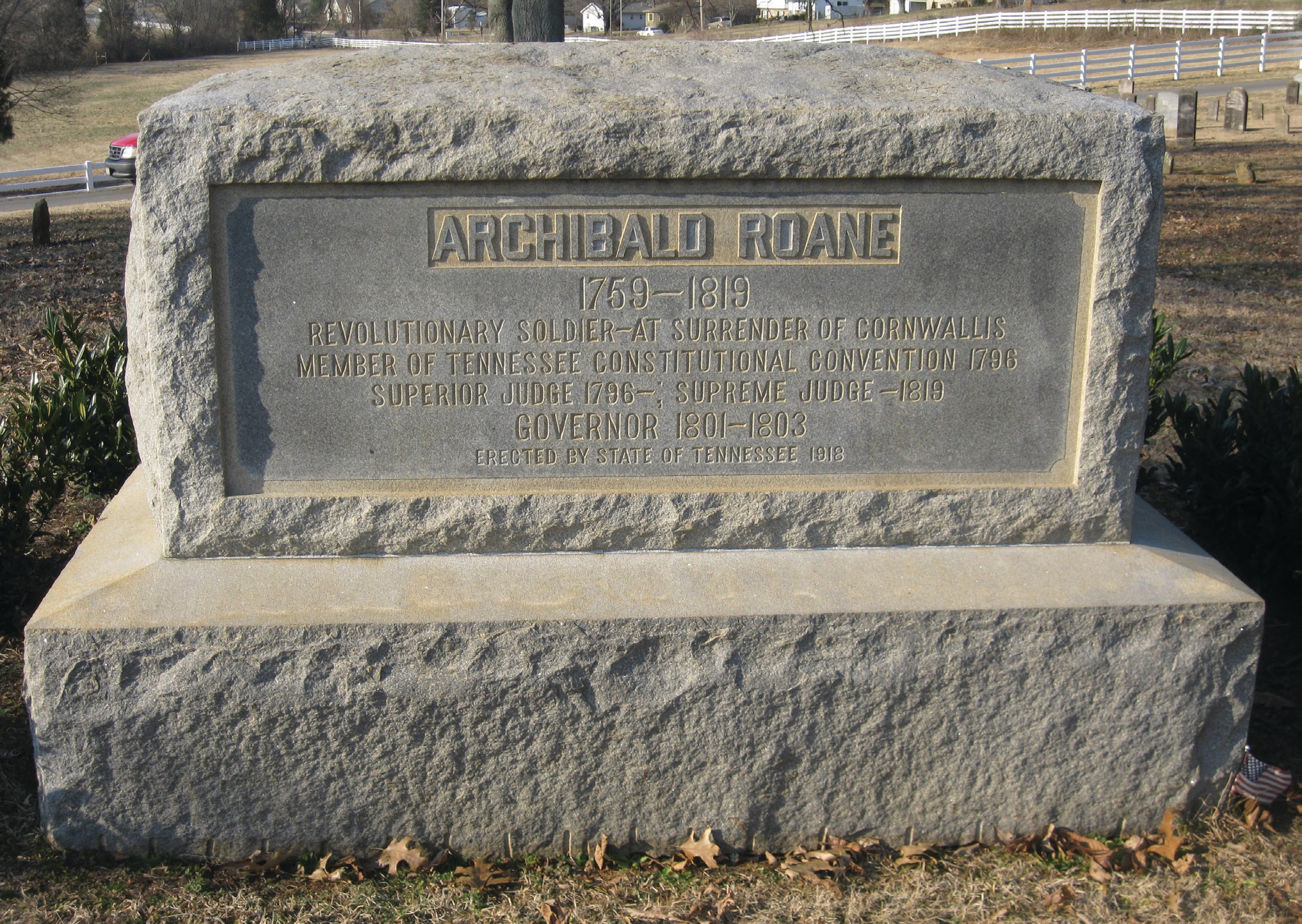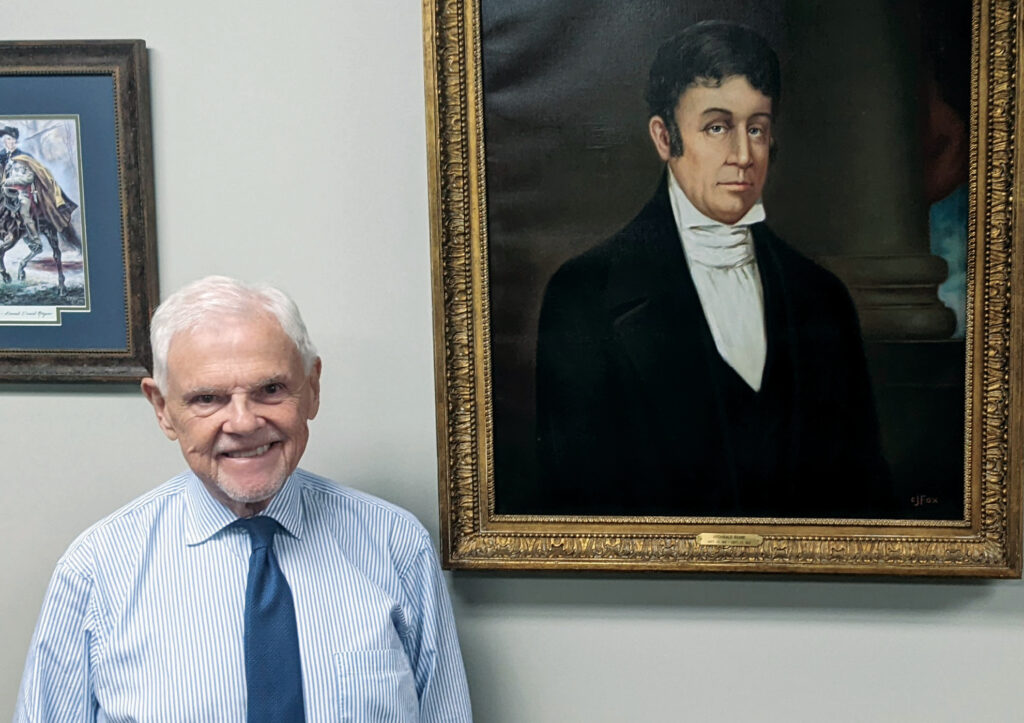Since he was the second governor of Tennessee and since there’s a county named for him, one might assume that Archibald Roane was well respected in his time. However, that’s not the case. In fact, Archibald Roane’s political enemies might as well have erased the man from the history books.
It wasn’t as if he didn’t have military credentials. A Pennsylvania native, Roane was a member of the 9th Battalion of militia that crossed the Delaware River with George Washington in 1776. He was also present at the surrender of Cornwallis in 1781.
After the war, Roane got a legal education and migrated to Tennessee. In 1790, William Blount — governor of the Southwest Territory — appointed Roane to be attorney general for the Washington District (present-day East Tennessee).
Six years later, Roane represented Jefferson County at Tennessee’s first Constitutional Convention. We don’t know much about what he said at that convention, but we can see Roane’s signature on the Tennessee Constitution of 1796.
Tennessee’s first legislature chose Roane to be one of three judges on the state’s first Superior Court of Law and Equity — the closest thing Tennessee had to a Supreme Court back then.
John Sevier was Tennessee’s first governor. A man who had led his countrymen on countless military engagements against the American Indians, Sevier was formidable and powerful, and he was re-elected in 1797 and 1799.
In September 1801, Roane was elected to be Tennessee’s second governor in an election in which he was virtually unopposed. We can safely conclude that he had the endorsement of John Sevier, the state’s extremely popular first governor.

As Tennessee’s chief executive, Roane tried to reform the Tennessee militia. He encouraged the federal government to create a road from Nashville to Mississippi — then known as the Chickasaw Trace and now known as the Natchez Trace. He also tried to deal with ongoing disputes with Kentucky and Virginia over the location of Tennessee’s border.
But none of those things mattered as much as a decision Roane made in 1803.
In February of that year, the highest-ranking officers of the state militia gathered to elect their major-general. As fate would have it, the vote ended in a 17 to 17 tie between John Sevier and Andrew Jackson. The Tennessee Constitution stipulated that the governor cast the deciding vote.
Roane would have been better off not coming to work that day. But he did and cast his decisive vote for Jackson. It later came out that Jackson presented Roane with evidence that Sevier had been complicit in the awarding of land grants to himself and members of his family. (The awarding of land grants was rife with corruption; there were often accusations of this sort being bandied about.) Whether or not this was significant in Roane’s decision will never be known. But Sevier — who was 22 years older than Jackson — denied all wrongdoing and never forgave Roane.
When Roane’s term ended in 1803, Sevier ran against him and won — 6,780 to 4,923 votes. Roane ran against Sevier again in 1805 but lost again.
Roane went back to being a judge, then a state senator from Knox County and in 1812 was reappointed to the highest court in Tennessee. He was also a trustee of Blount College, Greeneville College and Washington College. But Roane was hounded by Sevier and Sevier’s allies for the rest of his life. “I have known for some time that I had inveterate enemies who would stoop to anything to injure my reputation,” Roane wrote in the Dec. 9, 1811, Knoxville Gazette.
Also keep in mind that the “shift of power” from John Sevier to Andrew Jackson was the most personal event in the greater shift of power from present-day East Tennessee to Middle Tennessee. It occurred for logical reasons: the superior navigability of the Cumberland River over the Tennessee River and the fact that the population of Middle Tennessee was growing much faster than that of East Tennessee. But people in East Tennessee didn’t see it that way. Some blamed Knoxville’s declining fortunes on Roane and saw him as a traitor.
Archibald Roane died in January 1819 — by which time his choice of Andrew Jackson as a military leader had been proven to be a wise one at the battles of Horseshoe Bend and New Orleans. However, this still didn’t restore Roane’s reputation. Roane’s short obituary in the Knoxville Gazette didn’t even mention that he had once been governor of Tennessee. “His character as a private citizen was correct, blameless and exemplary,” said the article — implying that his “character” as governor was not. Meanwhile, his Nashville Whig obituary said that Roane “was always actuated by the purest motives,” a sentence that could be interpreted many ways.
The downplaying of Roane’s achievements continued to his next of kin. In 1822, when Roane’s daughter, Anne, married, the Knoxville Intelligencer said she was the child of “Archibald Roane, Esq.”but didn’t point out that the man had been governor. When Roane’s widow, Ann, died in 1831, the Whig said she was the widow of “the late Judge Roane,” not mentioning that he had been governor. When his eldest son, James, died of cholera in 1833, there was no mention of his father.
If you are looking for proof that Roane was disparaged, consider this: For nearly 100 years after his death, the man had no tombstone! Gov. Roane was buried with only a small brick wall to mark the spot in the Knox County community then known as Concord.
Talk of a tombstone for Roane began around 1901 when a Knox County doctor named Dr. R.M. Tillery (specialist in ear, eye, nose and throat — according to his advertisements) began publicly campaigning for one. However, it wasn’t until World War I that the Tennessee General Assembly authorized $500 for the purpose.
The large tombstone at Roane’s grave was unveiled at a ceremony on June 26, 1918. At the unveiling, Judge Edward T. Sanford gave a long, eloquent speech, which was run in its entirety in the Knoxville Sentinel. So it was then — 99 years after his death — that someone finally paid tribute to Tennessee’s second governor.




